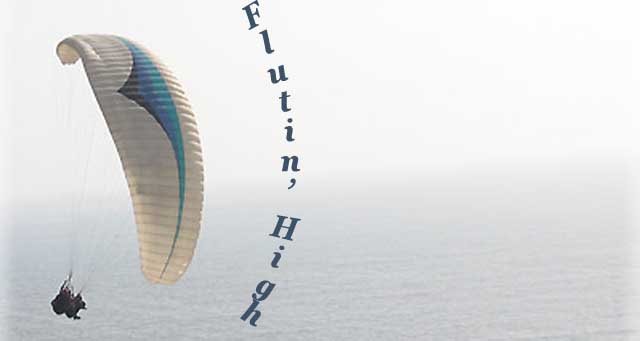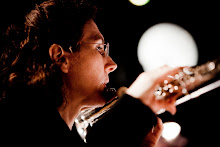Thank goodness for imagery. Here is a collection of ideas to help stimulate the aural imagination. I was inspired by Photo Shop's gradient tool to make the following images.
Let's take one note and see what kind of spectrum can be produced. I chose B natural because it is the Moyse thing to do, but choose a note that is good for you. The purpose is to take a full breath, play a single note while going from one aural extreme to another. What happens in the middle can be quite interesting, I find. You can also practice these exercises backwards.
Some people work well with color imagery, so an exercise like this might work:
 Another exercise could be to imagine a trumpet-like sound, then go to the extreme of complete air noise. I thank Harrie Starreveld for this suggestion.
Another exercise could be to imagine a trumpet-like sound, then go to the extreme of complete air noise. I thank Harrie Starreveld for this suggestion.You can also consciously control the position of your tongue by producing different vowel sounds. For example thinking a deep, open O sound, to a rather closed I (think of the word "eye"). I spelled it "aye" in the example. In preparation for this, I like to sing the exercise first to get a feel for how the tongue moves and how it changes the harmonic components of the sound.
Peter Lukas Graf also has an interesting approach. He describes different categories of sounds starting with those that are rich in overtones, think of the opening of the second movement of Cesar Franck's Sonata in A, to those that are poor in overtones, think of the opening of Debussy's L'Apres Midi. Of course it is a simplification, the music of Franck and Debussy require a variety of colors, but these are the associations that stick. If such imagery is useful, here is an illustration:




